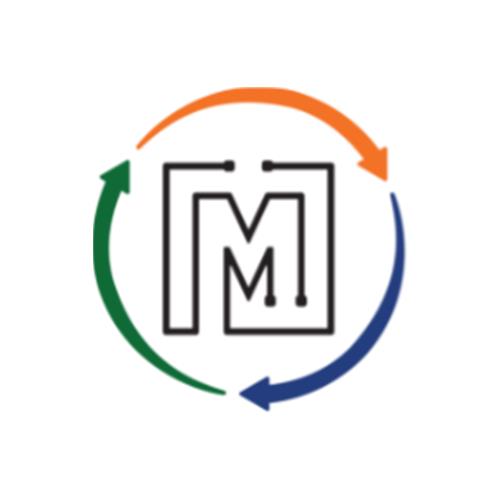The Automotive Industry Action Group (AIAG) has recently released the third edition of its Advanced Product Quality Planning (APQP) guidelines, marking a significant update after nearly 15 years. The previous edition was published back in 2008. In this latest iteration, AIAG has introduced several crucial changes to enhance product development processes and ensure quality across the automotive industry.
1. Emphasis on Continuous Improvement
To begin, the updated APQP guidelines strongly emphasize continuous improvement. This involves ongoing reviews and a systematic appreciation of lessons learned. For example, management reviews are now integral to ensuring organizations document their continuous improvement efforts and track results effectively.
2. Separation of Control Plan
In a notable development, the control plan has been separated from purely developmental activities. Previously, the control plan was primarily associated with product development. However, the new guidelines position it as a critical component of auditing. By doing so, AIAG recognizes the control plan’s potential for quality, process, and production audits. It also serves as a valuable resource for root cause analysis related to quality defects. Going forward, the control plan will guide product development throughout the entire lifecycle of components and systems.
3. Enhanced Sourcing Checklist
The third edition introduces an expanded sourcing checklist. This checklist covers two essential aspects:
Supplier Selection: Organizations must rigorously evaluate suppliers using a comprehensive checklist. High-risk suppliers receive particular attention.
Sourcing Section: The new guidelines provide detailed guidance on sourcing practices. This is especially relevant given the increasing complexity and interdependencies within automotive systems and components.
4. Capacity Assessment
Assessment Planning and Evaluation of Suppliers and Manufacturing Plant Capacity:
Over the years, many variances and conflicts have arisen due to manufacturing not having sufficient capacity to meet Original Equipment Manufacturer (OEM) requirements. Conversely, there have been instances of overengineering for larger capacity than realized during production.
The new guidelines address this by requiring a thorough review and approval of realistic capacity for manufacturing, assembling, packaging, and shipping of products. This ensures alignment with actual production capabilities.
5. Change Management
Change Management Section and Checklist:
Given the frequent changes before, during, and after production—especially with the advent of complex multi-functional systems and assemblies—the new guidelines establish a framework for effective change management.
Organizations are now mandated to track changes continuously. This proactive approach ensures that modifications are well-documented and managed throughout the product lifecycle.
6. APQP Program Metrics
Metrics Focusing on Program Completion Effectiveness:
As part of management reviews, the new guidelines emphasize measuring the success of APQP activities across business units.
Key metrics, such as the percentage of Production Part Approval Process (PPAP) submissions submitted on time and the percentage of PPAPs approved in the first submission, play a critical role in assessing team performance.
7. Risk Management Mitigation Plan
Analyzing and Addressing Risks Continuously:
The APQP (3rd edition) update introduces a new section dedicated to risk management. Companies are now required to perform risk analysis audits across their processes.
This involves evaluating failure modes, understanding the impact of failures at both component and system levels, safeguarding intellectual property (IP), and addressing cybersecurity and fraud prevention risks.
Organizations can better navigate product development and the entire product lifecycle by considering larger system and company-level risks.
8. Part Traceability
Effective Part Traceability:
Original Equipment Manufacturers (OEMs) have historically grappled with part traceability issues, mislabeled skids, and packaging challenges.
While most existing requirements focused on the OEM level, the new guidelines extend the responsibility for part traceability to quality, engineering, and production teams.
Ensuring effective part traceability is essential for maintaining product integrity and quality.
9. Enhanced Task Completion Review Checklist (Milestone)
The third edition of AIAG’s APQP guidelines introduces an updated task completion review checklist. Traditionally, development projects have been managed primarily at the Original Equipment Manufacturer (OEM) or manufacturer level. However, recognizing the significance of metrics in APQP activities, the new guidelines emphasize milestone management. Clear, delegated tasks and responsibilities are essential for effective project management.
10. New Gated Management and Comprehensive Program Concept Review
The following components constitute the new gated management approach:
Document Checklist for Each Gate Review:
Gate reviews play a pivotal role in ensuring project progress. The guidelines now require a comprehensive checklist for each gate review, facilitating thorough assessments at critical junctures.
Alignment to Typical Program Milestones:
Aligning gate reviews with typical program milestones enhances project visibility and streamlines decision-making. This alignment ensures that project phases progress systematically.
Support for the Expectation of Gate-On Leadership System:
The new guidelines emphasize the importance of leadership involvement during gate reviews. Effective gate management requires leadership support and engagement.
Review of Supplier APQP Activity (Not Organization):
Beyond internal processes, the guidelines extend the scope to include supplier APQP activities. Evaluating supplier readiness and alignment with project milestones is crucial for successful outcomes.
Gate management represents a significant shift in effective project and product development practices. Historically, manufacturers operated with ad-hoc approaches, where responsibilities were often unclear, leading to project handoffs between individuals or teams. The new guidelines mandate robust gate management, ensuring that each phase and responsibility must be completed before transitioning to the next team. This approach enhances visibility, promotes timely project completion, and often exceeds quality and timing expectations.
Companies must comprehensively evaluate programs and projects, actively involving management in decision-making.
Final Thoughts
By emphasizing these updates, AIAG aims to enhance product development processes’ overall quality and efficiency. Additionally, the new edition addresses the unique challenges posed by software development for electric vehicles (EVs), autonomous driving systems, and other advanced technologies. MESH Works can help buyers seamlessly implement these changes. Contact MESH Works today to find out how.





